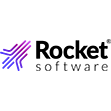
SAS Report: Analytics Innovators Trump Mere Adherents
Analytics are clearly on the rise as a transformational business technology, suggests research by SAS and MIT Sloan Management Review.
 According to a recent survey conducted by the partners, 67 percent of business leaders surveyed at the end of 2012 believe that analytics made their companies more competitive – a jump from the 37 percent in a previous 2010 study.
According to a recent survey conducted by the partners, 67 percent of business leaders surveyed at the end of 2012 believe that analytics made their companies more competitive – a jump from the 37 percent in a previous 2010 study.
“Increasingly, top thinkers in academia and business believe that analytics, especially analytics connected with big data, is going to be a driving force in our economy and society in the next 10 to 20 years,” suggests the report generated by the study. The report, titled “From Value to Vision: Reimagining the Possible with Data Analytics,” surveyed 2,500 companies to gauge attitudes on big data analytics.
The report suggests, however, that have joined the big data revolution shouldn’t stop too long to pat themselves on the back. With companies increasingly jumping with both feet into the pants of big data analytics, the competitive edges can dull quickly.
“In some markets, once a company finds a unique way to use data to gain an advantage,” says the report, “competitors jump quickly on the bandwagon and level the playing field. Simply obtaining an advantage from analytics is not enough in these cases; insights must be revitalized again and again to sustain a competitive advantage.”
What this means, says the report, is that organizations need to continuously find new ways to apply analytics to refashion the advantage they gain from the data.
The study suggests that there are two paths that companies are taking where their analytics are concerned: the cost cutting path, and the innovation path. The 11% of organizations that are getting the most value out of big data, says the report, differentiate themselves by utilizing real time decision-making, increasing customer understanding, and accelerating the development of new products. In short, says the report, analytical innovators use data and analytics as a company and customer development tool, as opposed to a cost cutting tool.
“Analytical Innovators use different language than other types of companies to talk about analytics,” says the report. “Analytics practitioners frequently described their analytics capabilities in practical terms, such as solving problems or increasing efficiencies. In stark contrast, analytics innovators describe their analytics capabilities in terms of ‘reimagining’ or ‘rethinking.’”
The result of this innovations is disruptive, suggests the study, as a significant shift in power is happening within organizations in favor of the internal analytical innovators. This is causing some significant waves where funding decisions are concerned.
“Having a culture, which has evolved over the last couple of years, based more on data, has caused us to make smarter decisions,” says Jeff Rosenfeld, VP of customer insight and analytics and Neiman Marcus. “How we choose to allocate our marketing dollars has shifted by substantial dollar figures based on analytics.” Examples, says Rosenfeld, include changes to website, customer experience, or promotions – all which were put under analytical scrutiny to understand the best paths to profitability.
So how does a company become an analytical innovator? The report concludes to suggest a culture shift towards supporting the development and dissemination of analytical insights, and data-driven decision-making. This includes viewing data as a core asset that can be used to enhance operations, customer service, and marketing and strategy. The report also suggests incorporating the use of the data for faster results. And finally, the report advises shifting internal power and resources towards those managers who embrace and act on data driven decision-making.
Related Items:
Data Science and the Decision-maker in the Machine
Vogels: Hate the Name, Not the Tech



























